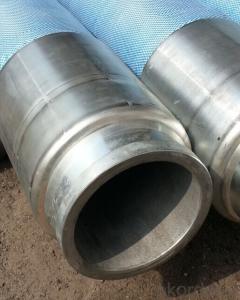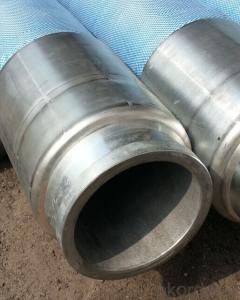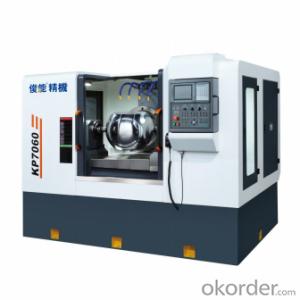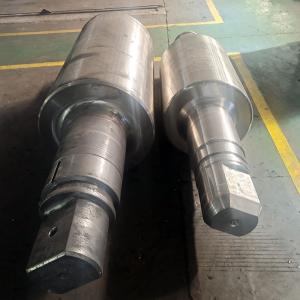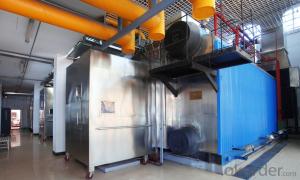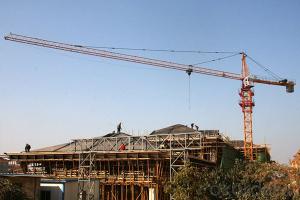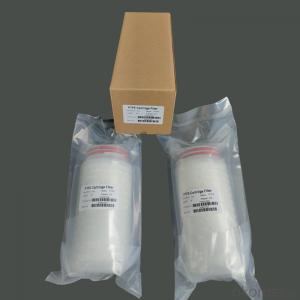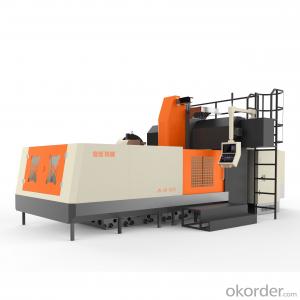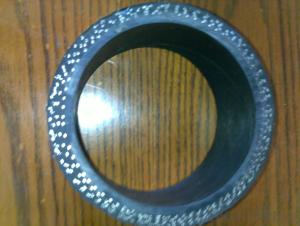Rubber End Hose With Two Side Couplings Working Pressure 85 Bar 3M*DN100
- Loading Port:
- Shanghai
- Payment Terms:
- TT OR LC
- Min Order Qty:
- 10 pc
- Supply Capability:
- 5000 pc/month
OKorder Service Pledge
OKorder Financial Service
You Might Also Like
Product Description:
The 3M*DN100 rubber end hose with two side couplings, normally the hoes is made by NR and reinforced by four layer steel wire, and the two couplings at each side are made by steel material No.ST52, 20#, 37MN5, with hot treatment according to customer’s requests, and also package in bundles or nude packing directly put into container.
Scope of Application of the hose
The 3M*DN100 rubber end hose is a concrete delivery for combined use with other concrete pipelines in concrete placement operations. It can be widely used in the construction of various types of concrete structures like industrial and civil buildings, bridges, roads, and other types of infrastructure.
Product Advantages:
OKorder's 3M*DN100 rubber end hose Channels are durable, strong, and safety. We are the biggest group in this business filed and the majority resources are under our control, which is make sure the delivery time and qualified products, meanwhile we have more than 20 overseas branches our people will go to visit customer very fast for more convenient communication.
Main Product Features:
Premium quality
· Prompt delivery & seaworthy packing (5-10 days)
Reliable performance·
Professional Service
· Competitive pricing
Measuring of wall thickness from the outside
FAQ:
Q1: How soon can we receive the product after purchase?
A1: Within three days of placing an order, we will book the vessel for goods. The specific shipping date is dependent upon international and government factors, but is typically 7 to 30 workdays.
Q2: If we can produce some pipes according to customers request?
A2: Yes, we can produce Concrete Placing Boom according to the difference country situations to make it suitable to the market and customers. We have very professional technical team to make the design.
Q3: How to make a quick resolution for after service?
A3: OKorder and our manufacture both have overseas branches all-around of world, if needed,
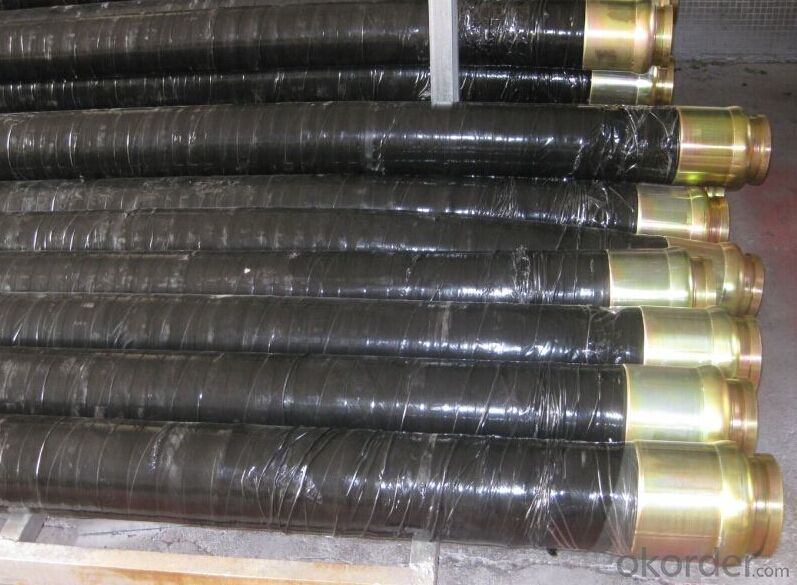
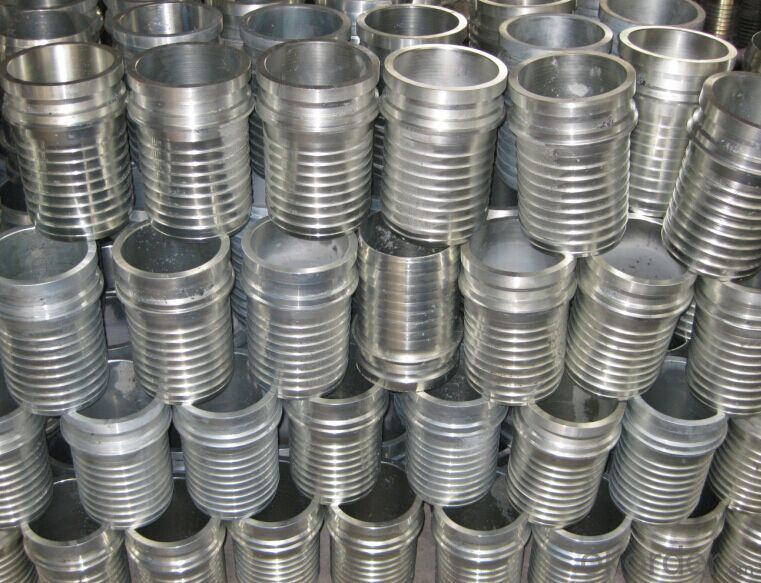
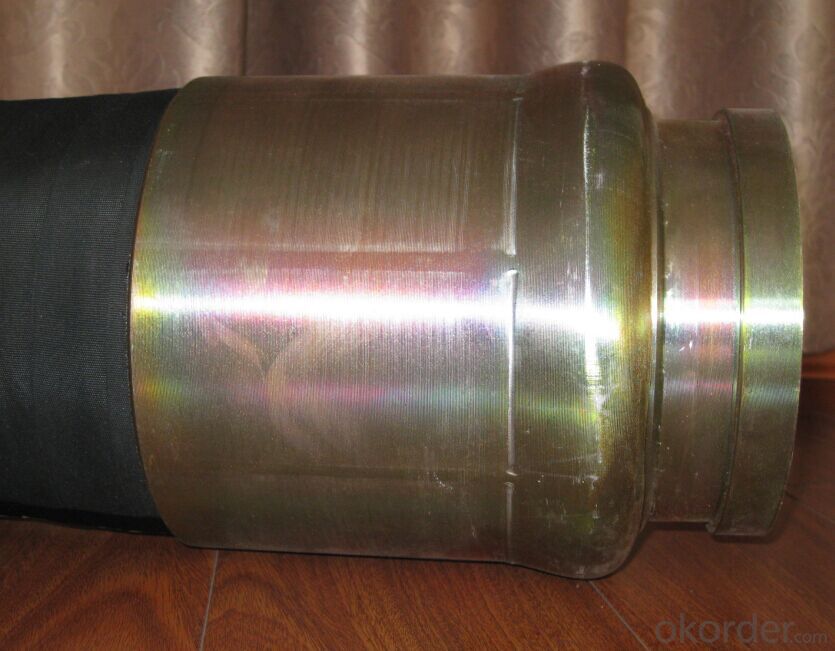
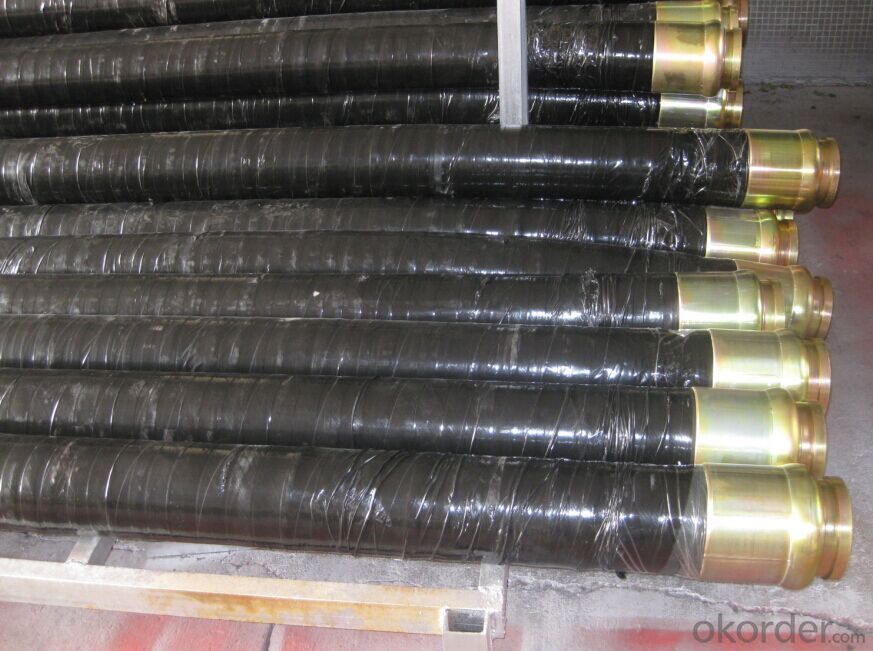
- Q:How to choose concrete pump?
- A concrete pump motor power is a prerequisite for determining the export pressure and transport volume, the motor power is certain, will increase pressure to reduce the amount of transportation; on the contrary, reduce export pressure, will make the delivery volume increase
- Q:What are the indicators of a faulty concrete pump seal?
- There are multiple signs that may suggest a defective concrete pump seal. These signs include: 1. Leakage: One of the most evident indications of a faulty seal is when concrete or water leaks around the seal area. If you observe any fluid seeping out from the seal, it is a clear sign of a problem. 2. Decreased pumping efficiency: A faulty seal can lead to reduced pumping efficiency. If you notice that the concrete pump is not delivering the expected amount of concrete or is struggling to pump the material, it could be due to a seal issue. 3. Increased noise and vibration: The operation of a concrete pump may experience heightened noise and vibration due to a defective seal. Unusual sounds or excessive vibration can indicate that the seal is not functioning properly, and further inspection may be necessary. 4. Premature wearing and tearing: A defective seal can cause premature wear and tear on other components within the pump system. This can be observed through the deterioration of other parts like gaskets, bearings, or pistons. Regular inspections can help identify such problems. 5. Inconsistent pressure: A faulty seal may result in inconsistent pressure while pumping concrete. If you notice pressure variations or irregular concrete flow, it may be a sign of a seal problem. 6. Excessive heat: Another indicator of a defective seal is the generation of excessive heat in the seal area. If the seal is not functioning properly, it can cause friction and heat buildup, which can be felt or observed by touch. Addressing any sign of a defective concrete pump seal promptly is crucial to prevent further damage to the pump system and ensure the operation's safety and efficiency. It is recommended to seek guidance and repair from a professional or contact the manufacturer in such cases.
- Q:What are the advantages of using carbon fiber components in concrete pump spare parts?
- Using carbon fiber components in concrete pump spare parts offers numerous benefits. To begin with, carbon fiber is renowned for its exceptional strength-to-weight ratio. This means that carbon fiber components can provide the same level of strength as traditional materials like steel or aluminum, but with significantly less weight. Consequently, spare parts made from carbon fiber are lighter, making them easier to handle and install, while also reducing the overall weight of the concrete pump system. Furthermore, carbon fiber exhibits remarkable resistance to corrosion. Unlike steel, carbon fiber does not rust or deteriorate when exposed to moisture or chemicals. This makes it an ideal material for concrete pump spare parts, as they are constantly exposed to water, cement, and other corrosive substances. The corrosion resistance of carbon fiber ensures the long-lasting durability of the spare parts, diminishing the need for frequent replacements and maintenance. Another advantage of carbon fiber components is their high stiffness. Carbon fiber is well-known for its rigidity and minimal flexural deformation, meaning that spare parts crafted from carbon fiber experience minimal deflection when subjected to heavy loads. This stiffness helps maintain the overall stability and performance of the concrete pump system, ensuring accurate and efficient pumping of concrete. In addition, carbon fiber demonstrates excellent fatigue resistance. Since concrete pump spare parts endure continuous cyclic loading and unloading, they are susceptible to fatigue failure over time. However, carbon fiber components possess the ability to withstand these cyclic loads without compromising their structural integrity. This enhances the reliability and lifespan of the spare parts, reducing downtime and maintenance costs. Lastly, carbon fiber offers unparalleled design flexibility. It can be easily molded into intricate shapes and geometries, allowing for the creation of customized spare parts tailored to specific requirements. This design flexibility empowers the optimization of spare parts' performance, enhancing the overall efficiency and productivity of the concrete pump system. In conclusion, utilizing carbon fiber components in concrete pump spare parts presents a multitude of advantages, including their outstanding strength-to-weight ratio, corrosion resistance, stiffness, fatigue resistance, and design flexibility. These qualities contribute to the enhanced performance, durability, and cost-effectiveness of the concrete pump system.
- Q:How often should concrete pump booms be inspected and maintained?
- Concrete pump booms should be inspected and maintained regularly, ideally on a monthly basis or as recommended by the manufacturer. This regular inspection and maintenance schedule helps ensure the safe and efficient operation of the equipment and minimize potential risks or breakdowns.
- Q:What are the advantages of using ceramic components in concrete pump spare parts?
- Using ceramic components in concrete pump spare parts offers several advantages. Firstly, ceramic materials are renowned for their exceptional durability and resistance to wear. Given the high pressure and intense forces that concrete pumps operate under, it is crucial to have components that can withstand such conditions. Ceramic parts possess superior hardness and strength, making them highly resistant to wear and extending the lifespan of spare parts. Secondly, ceramic components boast excellent corrosion resistance. Concrete consists of various chemicals and substances that can corrode metals. By utilizing ceramic parts, the risk of corrosion is significantly reduced, ensuring the longevity and reliability of the concrete pump spare parts. Furthermore, ceramic materials exhibit low friction coefficients. Consequently, when ceramic components are incorporated into concrete pumps, there is less friction between moving parts. This results in reduced energy consumption and increased efficiency. Ultimately, this can lead to cost savings and improved overall performance of the concrete pump. Moreover, ceramic parts possess high thermal resistance. Concrete pumps generate substantial heat during operation, which can potentially damage or deform certain components. However, ceramic materials can withstand high temperatures without compromising their structural integrity. This ensures the reliability and safety of the concrete pump. Lastly, ceramic components demonstrate excellent dimensional stability. They are less susceptible to expansion or contraction caused by temperature changes. This feature guarantees that spare parts maintain their shape and fit precisely within the concrete pump. Consequently, this precision fitting helps minimize leakage and maintain the pump's efficiency. In summary, the utilization of ceramic components in concrete pump spare parts offers exceptional durability, corrosion resistance, low friction, high thermal resistance, and dimensional stability. These advantages contribute to an increased lifespan, improved performance, reduced maintenance costs, and enhanced overall efficiency of the concrete pump.
- Q:How often should concrete pump pistons be replaced?
- The replacement frequency for concrete pump pistons depends on several factors, including usage, maintenance, and piston quality. It is generally advised to regularly inspect the pistons for signs of wear and tear, such as cracks, pitting, or scoring. If any of these signs are detected, it is recommended to replace the pistons immediately to prevent potential failures or leaks. Concrete pump pistons typically last between 25,000 and 75,000 cubic yards of pumped concrete, although this can vary depending on specific conditions and operating practices. For example, if the concrete being pumped contains abrasive materials or if the pump is used intensively or under harsh conditions, the pistons may wear out more quickly. Furthermore, proper maintenance practices can prolong the lifespan of the pistons. This includes regular cleaning and lubrication, maintaining the pump in good condition, and ensuring the pistons are correctly aligned and not subjected to excessive pressure or stress. In conclusion, closely monitoring the condition of the pistons and referring to the manufacturer's recommendations or seeking advice from a professional is essential to determine the appropriate replacement interval for the specific concrete pump being utilized.
- Q:Are there any specific safety considerations when using concrete pump spare parts?
- Concrete pump spare parts must be carefully considered for safety purposes. The first consideration is ensuring compatibility with the specific pump model. Using incompatible parts can lead to malfunctions, risking accidents and injuries. Proper training and knowledge are also crucial. Operators must be trained on installation, maintenance, and replacement of spare parts. They should also follow any safety precautions recommended by the manufacturer. Regular inspection of spare parts is important. Any signs of wear, damage, or deterioration should prompt immediate replacement to prevent accidents or equipment failure. Personal protective equipment (PPE) is essential when working with concrete pump spare parts. This may include goggles, gloves, hard hats, and steel-toed boots. PPE safeguards against hazards like debris, falls, or contact with hazardous substances. Adhering to local regulations and industry standards is advisable. These regulations may outline specific requirements for installation, operation, and maintenance of concrete pump spare parts. By adhering to these safety considerations, operators can minimize the risk of accidents, injuries, and equipment failure when using concrete pump spare parts.
- Q:How can one determine the correct weight and balance requirements for concrete pump spare parts?
- To determine the correct weight and balance requirements for concrete pump spare parts, one should refer to the manufacturer's specifications and guidelines. These documents usually provide information on the recommended weight limits and distribution for each spare part. Additionally, consulting with industry professionals or engineers with expertise in concrete pump systems can help ensure accurate weight and balance calculations.
- Q:Is the main pump of the concrete pump electric control or hydraulic control?
- General Separated and Closed Open Electromagnet Control Displacement (Current)
- Q:What is the function of a concrete pump remote control antenna?
- The function of a concrete pump remote control antenna is to wirelessly transmit signals from the remote control device to the concrete pump, allowing the operator to control the pump's functions from a distance.
1. Manufacturer Overview |
|
|---|---|
| Location | |
| Year Established | |
| Annual Output Value | |
| Main Markets | |
| Company Certifications | |
2. Manufacturer Certificates |
|
|---|---|
| a) Certification Name | |
| Range | |
| Reference | |
| Validity Period | |
3. Manufacturer Capability |
|
|---|---|
| a)Trade Capacity | |
| Nearest Port | |
| Export Percentage | |
| No.of Employees in Trade Department | |
| Language Spoken: | |
| b)Factory Information | |
| Factory Size: | |
| No. of Production Lines | |
| Contract Manufacturing | |
| Product Price Range | |
Send your message to us
Rubber End Hose With Two Side Couplings Working Pressure 85 Bar 3M*DN100
- Loading Port:
- Shanghai
- Payment Terms:
- TT OR LC
- Min Order Qty:
- 10 pc
- Supply Capability:
- 5000 pc/month
OKorder Service Pledge
OKorder Financial Service
Similar products
New products
Hot products
Related keywords
